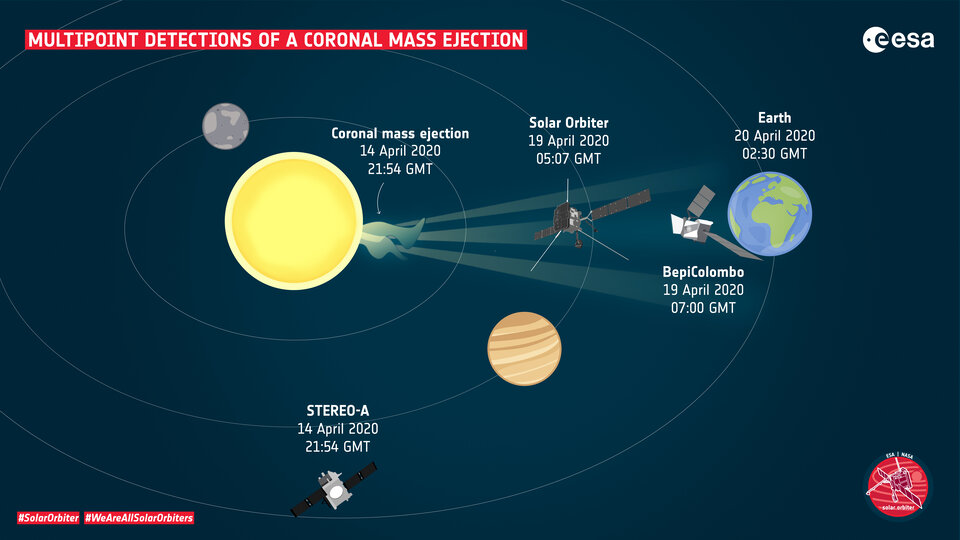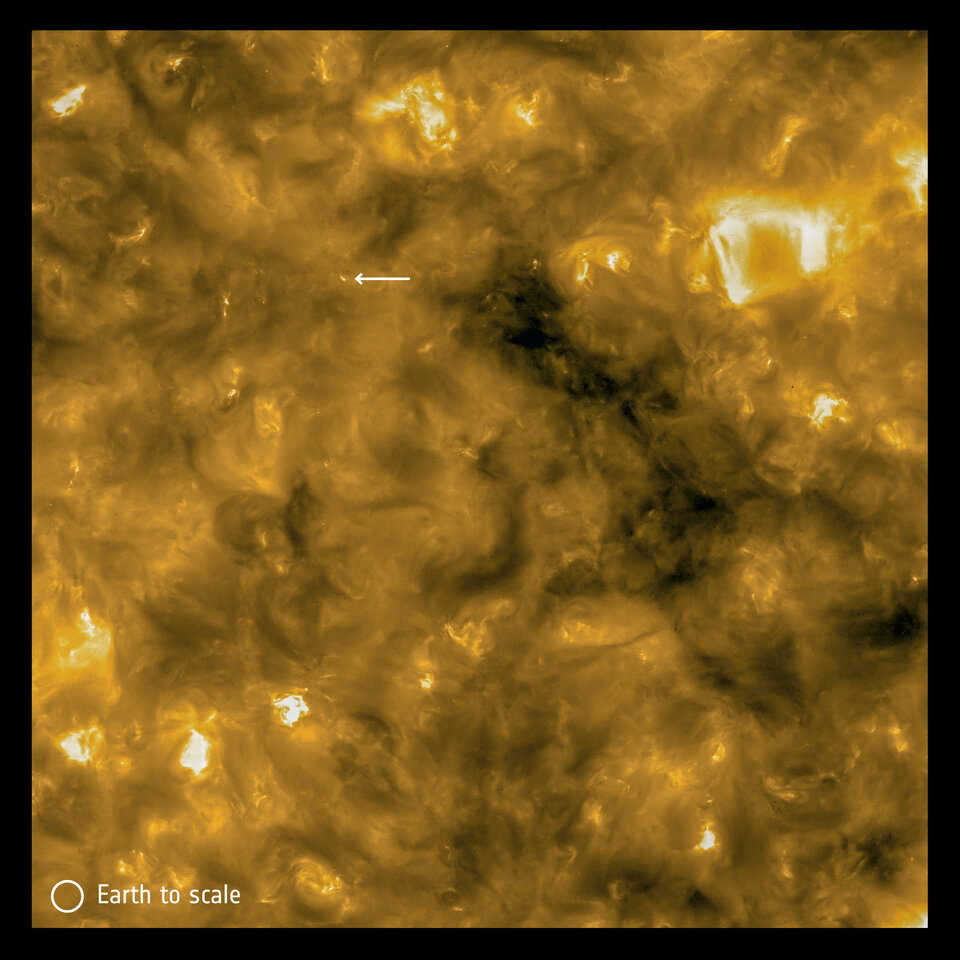One of the best things about astronomy is that it’s a never-ending supply of awesome visuals. Almost every new mission or telescope provides new ways to see the universe, and when those are translated visually they can offer absolutely stunning images of some of the most interesting places in that universe. Now humanity is starting to process the images from one of the newer missions to grace the heavens: the European Space Agency’s Solar Orbiter. And boy are those images breathtaking.
The data the scientists are analyzing are collected using ten different instruments composed of both telescopes and in-situ instruments. They have collaborated to provide data sets (and in some case images) of three very different phenomena.
The first data set focuses on that most unpredictable of environmental conditions – weather. In this case though, it’s space weather, and specifically the solar winds that are occasionally emitted from the sun itself. Solar Orbiter’s in-situ instruments were able to calculate where the solar wind that was buffeting the spacecraft came from. One particular wind they were monitoring in June 2020 seemed to come from near a “coronal hole”, where the sun’s magnetosphere allows the wind, which is normally contained on the sun itself, to be ejected out into space.
Credit: ESA
Another interesting data set regarding space weather was the Solar Orbiter’s role in a multi-point assessment of a coronal mass ejection (CME). The CME was directed as the Solar Orbiter while it was aligned between the sun and the Earth, so the CME continued past the orbiter and eventually hit Earth a few hours later. Orbiting the Earth at the time was BepiColombo, ESA’s first mission to Mercury. BepiColombo also picked up the signal for the CME as it hit the Earth.
There was a third satellite that also contributed additional datapoints – Stereo-A, a NASA mission that has been observing the sun since 2006. It originally picked up the CME as it was emitted from the sun, and was able to watch as it hit the Solar Orbiter and BepiColombo in turn. Data points from all three of these platforms can be used to help analyze any interesting aspects of this, and potentially other, CMEs.

Credit: ESA
Strangely, there was another probe that almost didn’t even notice the CME, even though it was designed specifically to detect phenomena like it. SOHO, an orbiter that has been observing the sun since 1995, barely noticed when it was hit by the CME while in Earth’s L1 LaGrange point. Additional data from the observatory would have led to an additional increase in the treasure trove already collected, but now scientists must puzzle over the data’s absence rather than its meaning.
The second data set relates to the “campfires” that were first noted in the first batch of Solar Orbiter images from earlier this year. The research teams have begun hinting that the campfires might actually be the long-sought after “nano-flares” that have been theorized to cause the heating of the sun’s corona.

Credit: ESA
A definitive answer is not yet in the bag though, as additional data will have to be collected, especially about the energy levels of the campfires. As Frédéric Auchère, the Chair of the Solar Orbiter Remote-Sensing Working Group puts it, “Right now, we only have commissioning data…and the results are very preliminary. But clearly, we do see very interesting things.”
The third data set came from a serendipitous bit of cosmic timing. When the Solar Orbiter was launched, program managers noticed that it would be passing through the tail of the comet ATLAS. This provided a unique opportunity to collect some additional data, even though Solar Orbiter’s instruments were not designed for a cometary encounter.

Credits: NASA, ESA, STSci, and D. Jewitt (UCLA)
What made the encounter even more interesting is that ATLAS actually disintegrated in April of 2020, before Solar Orbit reached its tail. While there was a chance that the spacecraft might not detect anything at all due to the comet’s disintegration, it did in fact pick up spikes in magnetic signatures as well as patches of increased interstellar dust. As Tim Horbury, the Chair of the Solar Orbiter In-Situ Working Group, points out “This is the first time we’ve essentially traveled through the wake of a comet that’s disintegrated”.
Even though there likely won’t be any pictures from the Solar Orbiter of the comet’s disintegration, there were some amazing ones from Hubble. And and Solar Orbiter continues its data collection mission with a couple of Venus flybys and an exceptionally close approach to the sun, there are likely some amazing pictures of our closest star still to come.
Learn More:
ESA: Solar Orbiter: turning pictures into physics
UT: They’re In! The First Images From ESA’s Solar Orbiter
Space.com: Solar Orbiter spacecraft makes its 1st flyby of the sun
Lead Image Credit: Picture of the sun from the Solar Orbiter. Credit: ESA

